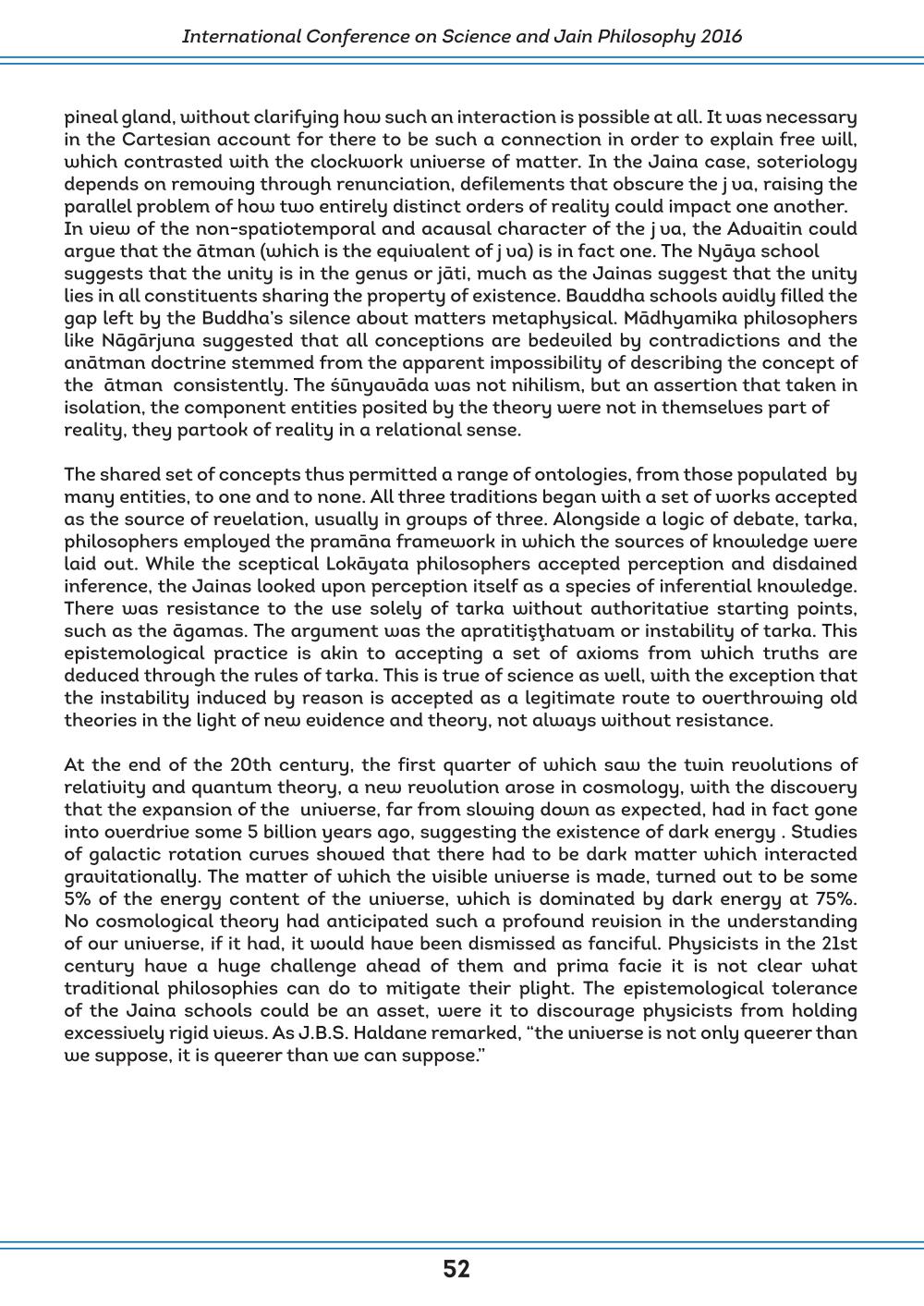________________
International Conference on Science and Jain Philosophy 2016
pineal gland, without clarifying how such an interaction is possible at all. It was necessary in the Cartesian account for there to be such a connection in order to explain free will, which contrasted with the clockwork universe of matter. In the Jaina case, soteriology depends on removing through renunciation, defilements that obscure the jua, raising the parallel problem of how two entirely distinct orders of reality could impact one another. In view of the non-spatiotemporal and acausal character of the jua, the Advaitin could argue that the ātman (which is the equivalent of jua) is in fact one. The Nyāya school suggests that the unity is in the genus or jāti, much as the Jainas suggest that the unity lies in all constituents sharing the property of existence. Bauddha schools avidly filled the gap left by the Buddha's silence about matters metaphysical. Madhyamika philosophers like Nagarjuna suggested that all conceptions are bedeviled by contradictions and the anātman doctrine stemmed from the apparent impossibility of describing the concept of the ātman consistently. The sūnyavāda was not nihilism, but an assertion that taken in isolation, the component entities posited by the theory were not in themselves part of reality, they partook of reality in a relational sense.
The shared set of concepts thus permitted a range of ontologies, from those populated by many entities, to one and to none. All three traditions began with a set of works accepted as the source of revelation, usually in groups of three. Alongside a logic of debate, tarka, philosophers employed the pramāna framework in which the sources of knowledge were laid out. While the sceptical Lokāyata philosophers accepted perception and disdained inference, the Jainas looked upon perception itself as a species of inferential knowledge. There was resistance to the use solely of tarka without authoritative starting points, such as the agamas. The argument was the apratitişthatuam or instability of tarka. This epistemological practice is akin to accepting a set of axioms from which truths are deduced through the rules of tarka. This is true of science as well, with the exception that the instability induced by reason is accepted as a legitimate route to overthrowing old theories in the light of new evidence and theory, not always without resistance.
At the end of the 20th century, the first quarter of which saw the twin revolutions of relativity and quantum theory, a new revolution arose in cosmology, with the discovery that the expansion of the universe, far from slowing down as expected, had in fact gone into overdrive some 5 billion years ago, suggesting the existence of dark energy. Studies of galactic rotation curves showed that there had to be dark matter which interacted gravitationally. The matter of which the visible universe is made, turned out to be some 5% of the energy content of the universe, which is dominated by dark energy at 75%. No cosmological theory had anticipated such a profound revision in the understanding of our universe, if it had, it would have been dismissed as fanciful. Physicists in the 21st century have a huge challenge ahead of them and prima facie it is not clear what traditional philosophies can do to mitigate their plight. The epistemological tolerance of the Jaina schools could be an asset, were it to discourage physicists from holding excessively rigid views. As J.B.S. Haldane remarked, "the universe is not only queerer than we suppose, it is queerer than we can suppose."
52




